Laser complex XN-1 LaWS / AN / SEQ-3 (USA)
On July 18, the American television station CNN announced that they were conducting regular tests of the XN-1 LaWS laser complex. This check was carried out in one of the areas of the Persian Gulf, where the landing ship USS Ponce (AFSB (I) -15) was sent, currently performing the functions of an experimental vessel carrying the laser system. An unmanned aerial vehicle of comparatively small size was launched from the deck of the vehicle carrying the laser system. In the shortest possible time, the calculation of the laser setup detected the target, pointed its own weapon and inflicted fatal damage to the target. A damaged UAV fell into the sea. Regular tests of laser weapons were considered successful.
The report from CNN provided some information, mainly related to the positive features of a promising project. The commander of the ship USS Ponce (AFSB (I) -15) Christopher Wells noted that the new XN-1 LaWS complex is "much more accurate than a bullet." He also said that this is not the weapon that was available to fleet earlier. The existing systems were specialized and therefore could fight either only with surface, or only with airborne or exclusively with coastal targets, while the laser system is a universal weapon capable of attacking any objects.
Lieutenant Kale Hughes, who is in charge of operating the laser system, told reporters about the principles of its operation and its advantages. According to him, a powerful stream of photons is sent to the target, so that the gunner does not need to worry about wind, distance or other factors. Moreover, it is possible to hit targets literally at the speed of light. Also, Lieutenant Hughes noted that the emitter of the XN-1 LaWS complex works in the invisible part of the electromagnetic spectrum. Because of this, a person cannot see the beam or hear how the laser system works. Installation is invisible, but it shows the highest efficiency.
The existing complex is considered as an effective means of protecting ships from an air attack or light water craft. This potential of the complex has already been repeatedly tested in practice during the tests that have been going on for the past several years.
According to K. Wells, the promising laser system gives the carrier ship new opportunities. So, you can aim the laser at the target and use the incomplete power of the emitter. After that, you can bring the weapon to full capacity or disable. In addition, the gunner no longer needs to worry about collateral damage. The laser beam, unlike other modern means of destruction, does not deviate from the selected target and does not cause damage to nearby objects.
According to CNN, experts of the American defense industry are already working on new projects of similar laser complexes attributed to the so-called. second generation. Now it is planned to ensure the possibility of intercepting existing and prospective anti-ship missiles. The crew of the trial ship is already aware of such plans for military commanders and industry, but is in no hurry to share details. When asked about the anti-missile potential of the XN-1 LaWS system, Captain C. Wells gave an evasive answer and accompanied him with a smile.
To date, US defense companies have managed to create a number of promising armament systems using lasers. A significant number of such projects have already been brought to the ground tests. Laser complex XN-1 LaWS, not so long ago passed the next test, can be considered one of the most successful developments of its kind. From the beginning of the current decade, the experimental system had a good time to show itself on the land range, and then it was installed on an experimental vessel and again showed quite high characteristics.
History the XN-1 LaWS project, also known under the naval designation AN / SEQ-3, began in 2010 with the signing of the corresponding contract. The US naval forces began to show interest in promising weapon systems using unconventional methods of hitting targets, including a laser. Kratos Defense & Security Solutions offered its own version of such a weapon and was able to interest the Navy specialists. Soon the development company received an order from the Naval Surface Warfare Center, which is responsible for the development of advanced systems. For the subsequent design work and the construction of an experimental laser complex, the company was to receive $ 11 million. A promising project was developed as part of a major US Navy program called DE & EWS (Directed Energy and Electric Weapon Systems - "Systems of electric weapons and directed energy weapons").
A promising project received the working designation XN-1 LaWS (Laser Weapon System - "Laser Weapon System") and the official fleet AN / SEQ-3. Both designations are equivalent and are used in parallel, but working is a little more popular.
Already in May, 2012 was built and sent to the ground prototype XN-1. This product almost completely corresponded to the appearance proposed in the project, which made it possible in the future to transfer the prototype from the land installation to the carrier ship. When deploying a prototype at the site, they also installed some control devices borrowed from a serial air defense complex of the near zone. With their help, it was supposed to search for and accompany training objectives, as well as control new weapons.
In the early stages of ground tests, the LaWS complex was supposed to work on ground targets. Subsequently, the tasks of the complex were gradually complicated, and gradually he was “taught” to find and attack small-sized unmanned aerial vehicles. As reported, the laser complex was able to take on the support and attack the target, moving at a speed of 480 km / h at a distance of 3,2 km. Such inspections allowed to determine the real prospects of the proposed system and made it possible to start the implementation of a new stage of an ambitious project.
By the time the tests began at the land test sites, the Kratos Company, together with the NSWC, had managed to form a technical image of a promising laser complex. In the future, the main provisions of the project did not change, however, individual elements of the installation could be refined according to test results.
At the preliminary design stage, the development company proposed using a set of several solid-state lasers as part of the XN-1 LaWS system. Unlike chemical lasers, solid-state systems do not need means of storing and supplying liquid fuel components, which makes them simpler and safer to use. A certain loss in power was compensated by using six separate emitters installed in parallel. Thus, the target is simultaneously irradiated with six separate rays directed at one point.
Lasers with a total power of 33 kW were used on land and sea test sites. In the future, it is possible to increase the power up to 50-100 kW with the corresponding results for the firing range and the impact on the target. In the meantime, the existing 33-kilowatt complex is used.
All lasers of the LaWS complex are installed in a common cylindrical body and their rays are output through a large front lens. The case of the radiator has fastenings for mounting on the installation support elements. In addition, some other devices are mounted on it.
Experienced product XN-1 or AN / SEQ-3 has the means for automated guidance to the selected target. The prototype is based on a turntable, which provides a circular guide horizontally. On such a platform are placed vertical racks with devices for mounting the swinging part. A swinging platform is responsible for the vertical guidance, the elements of which are located both between the supports and on the sides of it. Above the central part of this platform is placed a large cylindrical casing of lasers. The side elements are intended for the installation of optical-electronic means of observation and guidance.
The prototype is not a full-fledged warhead, which led to some specific consequences. So, the ready complex did not receive any means of protection. All major components and assemblies are placed openly. A large number of cables and other flexible elements are fixed on their outer surface. Obviously, the survivability of such a facility in a real battlefield leaves much to be desired, but for a prototype the lack of protection is not critical.
The complex AN / SEQ-3 also includes several containers with power supplies. To power the laser system, several relatively compact stand-alone generators are used. Connection of the complex to general ship power systems is not required. In addition, based on one of the existing systems, an operator console was developed. It has the ability to display graphic and textual information. It provides both automated and fully manual control. The calculation of the complex consists of three people.
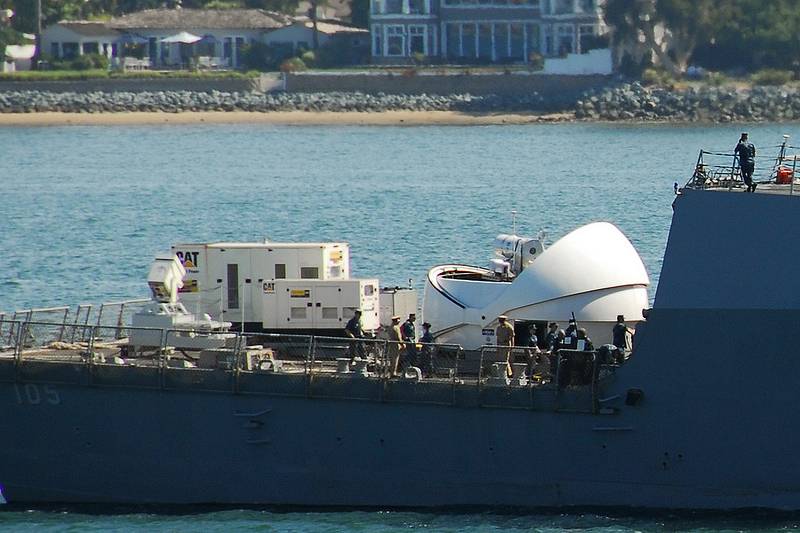
After testing the ground test site, permission was obtained to test the XN-1 complex on board the ship. The USS Ponce landing craft (LPD-15) was chosen as the first carrier of this system. In the foreseeable future, this ship was planned to be withdrawn from service of the Navy, and then written off. Nevertheless, it was proposed to use an outdated landing ship as a pilot vessel to test advanced weapons. Thanks to this solution, the landing ship soon received a laser complex, and in addition, it became a platform for developing new methods for the combat use of helicopters. Having become a trial ship, the ship received a new board number AFSB (I) -15.
The laser system is located in the rear part of the superstructure and has a light protection. When translated into the transport position, a rectangular casing advances on the complex, providing protection from external influences. Also, at one of the stages of testing, a spherical casing with a sliding roof was used. Both versions of the casing, apparently, do not have a reservation and do not allow to protect the installation from bullets, fragments and other threats.
The installation of the XN-1 LaWS complex on the USS Ponce ship (AFSB (I) -15) was completed by the middle of 2014. It was decided to test the prospective system at sea in conditions as close as possible to actual operation. In August of the same year, the experimental ship was sent to the Persian Gulf, in the zone of responsibility of the US Navy's 5 fleet. According to official data, the Middle Eastern seas were chosen due to the characteristic climatic conditions. The work of the ship in the Persian Gulf made it possible to study the operation of the laser system in a hot and humid climate.
It should be noted that the Persian Gulf has long been a zone of confrontation of several states, but, according to representatives of the United States naval forces, sending a carrier of a laser complex to the area was not a way of exerting pressure on a potential enemy.
As early as September 2014, the LaWS complex was put into trial operation. One of the consequences of this was the permission to use a combat laser as a means of self-defense of a ship. It was noted that the objectives of the installation can be UAVs and light boats or boats. The use of a conventional enemy against manpower is not planned
During trial operation, it was found that even in its current form, the AN / SEQ-3 installation is capable of showing high combat, technical and operational characteristics. The possibility of confident defeat of surface or air targets at ranges up to 1 nautical mile was confirmed. All systems operated normally in different weather conditions, including at high humidity. The checks of the complex during sandstorms were not conducted due to inexpediency.
To date, the XN-1 LaWS project has cost the customer 40 million dollars, and the cost of the prototype is noticeably less. An important feature of the developed installation, confirmed in practice, was the low cost of operation. One laser shot costs about 60 cents, while traditional shells or missiles with similar combat parameters can cost thousands and tens of thousands of dollars.
Optical electronic surveillance tools used as part of an experimental laser system, have established themselves as a convenient tool. Often, with their help, the crew of the carrier ship monitored the situation within a radius of several miles. As noted by the Navy wits, the ship received its own Hubble telescope.
Initially it was assumed that the “sea” tests of the LaWS laser complex would last about a year, then it would be dismantled from an experimental vessel, and the analysis of the collected data would soon begin, thanks to which the development of the existing project would continue. Later, however, there was a proposal to save the XN-1 on board the USS Ponce (AFSB (I) -15). Since the installation of the laser complex on the landing ship, three years have passed, but the trial operation and test "firing" has not yet ceased.
The latest XN-1 LaWS test so far took place just a few days ago. This time, the target drone became the training target. Despite the small dimensions of such a target, the crew managed to detect it, take it on escort and hit it with the help of laser radiation of the appropriate power. The stricken UAV fell into the water. It can be assumed that these are not the last checks of the promising system, and in the future, new ones will become its “victims”. Drones, light boats, etc. goals.
The future perspectives of the AN / SEQ-3 project are still unknown. The only built model of such a model has been on board an experimental vessel for several years and has been used in various tests. He has already managed to confirm his capabilities, but has not yet been adopted for service. Moreover, the possibility of adopting this model in service and launching mass production at the moment may be the subject of controversy. In the interests of the US Navy, a significant number of promising laser complexes have already been created, differing from each other in various features and characteristics.
The decision to adopt this or that model into service has not yet been made. If the XN-1 LaWS product from Kratos Defense & Security Solutions can show noticeable advantages over other developments, then it will have every chance of entering service. If other samples turn out to be better, the AN / SEQ-3 system will lose the chances of becoming a standard weapon of warships. So far, the final decision has not been made, although the successful testing of several laser installations brings this moment closer to a certain extent.
On the materials of the sites:
http://edition.cnn.com/
http://breakingdefense.com/
http://navsea.navy.mil/
http://news.usni.org/
https://edgylabs.com/
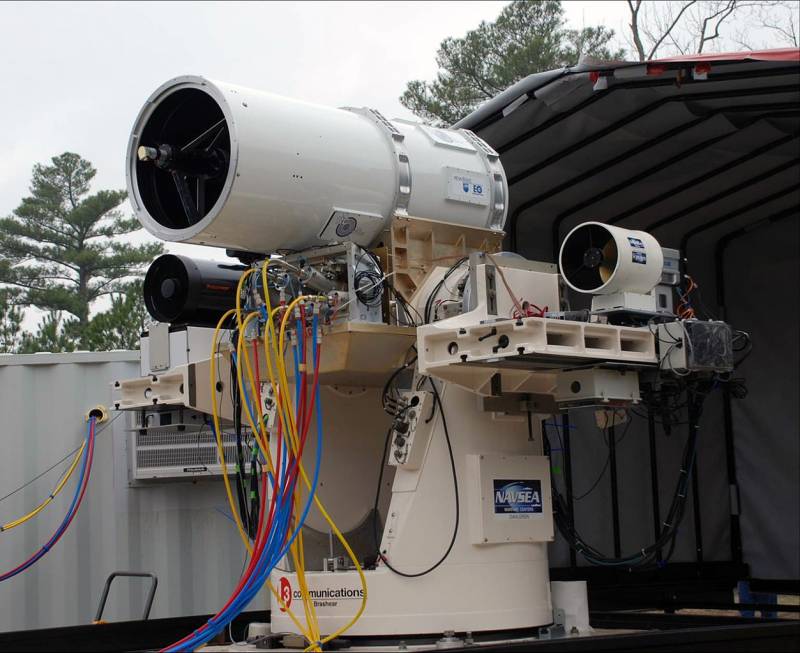
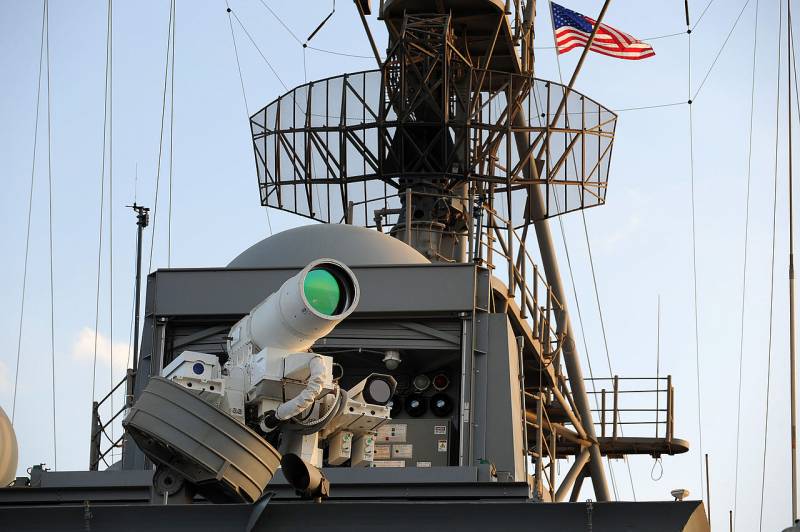
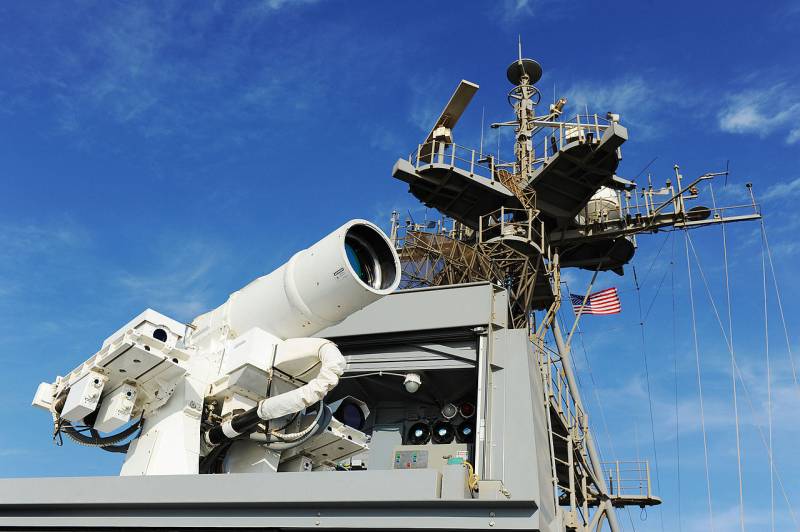
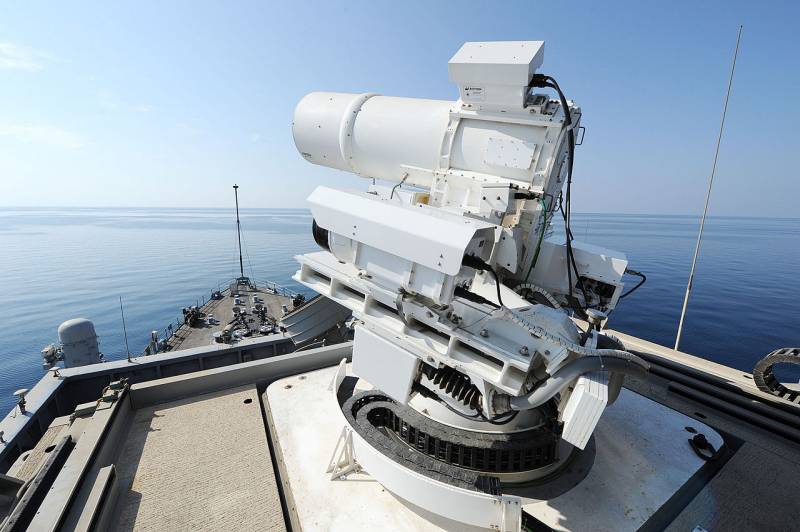
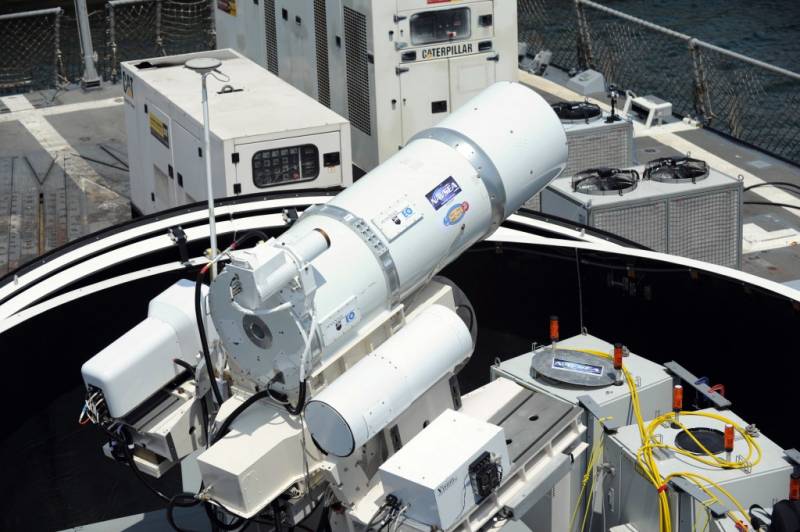
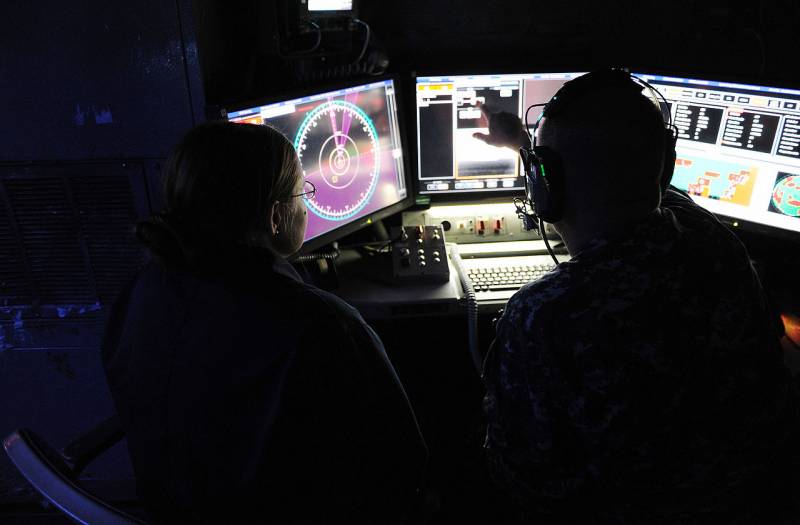
Information